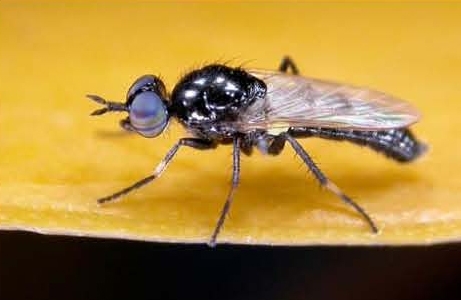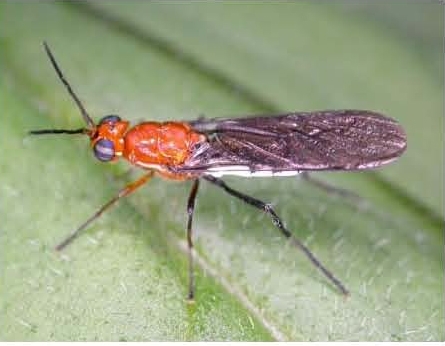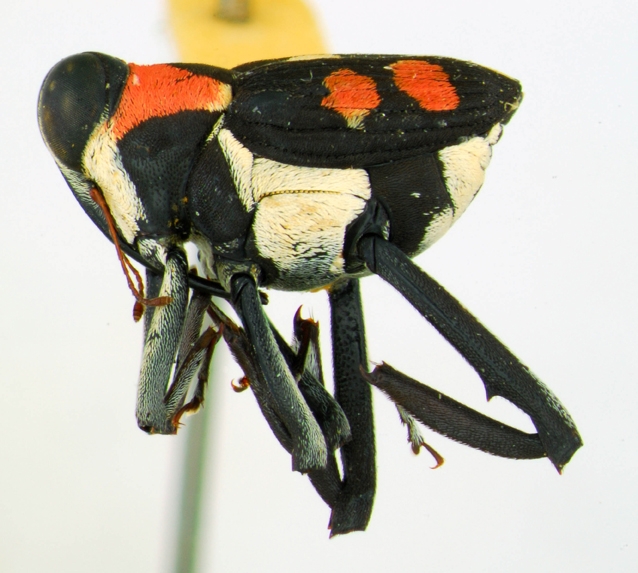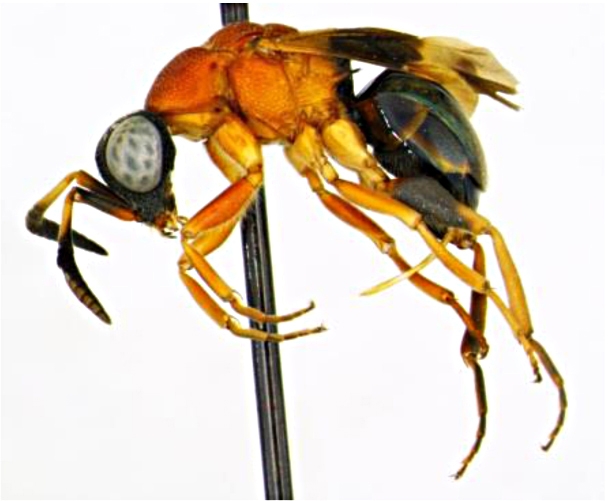
If you gift this to a family, friend or yourself, no one can ever take it away. It can't be stolen, damaged or lost. You'll never wear it out. It will never go out of fashion. It will always be considered special, creative, generous and thoughtful.
Downright thoughtful.
I mean, how many people get to name a new species of weevil?
In this case, it's naming rights for a cute little polka-dotted black and white weevil. For a donation of $2500 to the Bohart Museum of Entomology, University of California, Davis, it's yours.
To name, that is.
Bohart Museum Society member Henry Hespenheide, professor emeritus from UCLA, collected the weevil a couple of years ago in Panama, said Bohart Museum director Lynn Kimsey, professor of entomology at UC Davis.
This species is from genus Macrocopturus. Its relatives are distributed widely in the Western Hemisphere from Florida and the West Indies to South America, and currently include more than a hundred known species. Most Macrocopcurus are probably wood-borers as larvae, and the Florida species is a pest of mahogany, Kimsey says. Although most species are colored to blend in with the bark on tree trunks, this species is unusual and striking in having the bright spots of red scales.

Genus: Dipara species #1
Family Pteromalidae
Origin: Democratic Republic of Congo
Describer Steve Heydon
This delicate black jewel is tiger-striped with white bands and dotted with purplish metallic patches. This species is relatively common in the gallery forests along the river courses of west central DRC, but it can be collected only by means of yellow pan traps deployed on the forest floor. Similar species exist throughout the world, but mysteriously, no one has a good idea what they feed on.
Genus Callocleonymus species #1
Family Pteromalidae
Origin: Mississippi
Describer: Steve Heydon
This new species will be the first representative of the genus to be found in North America. This species is so rare, it is known from only a handful of specimens. It is native to the bottomland hardwood forests of the Gulf Coast.
Genus: Hedychridium species #1
Family: Chrysididae
Origin: Thailand
Describer: Lynn Kimsey
Members of the genus Hedychridium are among the most brilliantly colored of the chrysidids, with bright metallic blues, greens and even reds. This new species has all of that brilliance in blues and greens. These wasps are nest parasites of predatory, solitary wasps. They are like small jewels flitting about on the ground.
Genus: Psilochalcis species #1
Family: Chrysididae
Origin: Southern California
Describer: Steve Heydon
This new species of Psilochalcis is from the Algodones sand dune system of southern California. These tough little wasps survive in an area where daytime temperatures soar above 110° regularly, and the temperature near the sand exceeds 160° F. The females lay their eggs in the pupal stage of their hosts, probably small some small moth found feeding on the desert bushes.
Genus: Agapophytus nov. sp1
Family: Therevidae
Describer: Shaun Winterton
Genus: Agapophytus nov. sp2
Family: Therevidae
Describer: Shaun Winterton
Genus: Lagenosoma species 1
Family: Therevidae
Describer: Shaun Winterton
Genus: Undescribed genus and species
Family: Therevidae
Describer: Shaun Winterton
For more information on the Biolegacy Program, contact Lynn Kimsey at lskimsey@ucdavis.edu or call the main Bohart lineat (530) 752-0492.
Attached Images:

